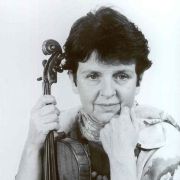Stuart Duncan was born on April 14, 1964 in Quantico, Virginia, but he was raised in Santa Paula, California. He is currently based in Nashville, Tennessee.
The Goat Rodeo Sessions: a collaboration with Yo Yo Ma, Edgar Meyer, and Chris Thile, some of the most talented string virtuosos of today.
Stuart Duncan has also been a member of The Nashville Bluegrass Band, a great representation of classic American bluegrass, since 1985. The band has toured globally and won two Grammies and multiple other awards. Stuart is a very versatile player, excelling in bluegrass, country, jazz, funk, and classical. He is also very skilled at blending all of these different styles to create a wonderful new sound.
Collaborations: Bela Fleck, Jerry Douglas, Dolly Parton, Reba McEntire, Alan Jackson and Barbara Streisand, among others.
“His discography is approaching the size of a metropolitan telephone directory, and his recording career demonstrates his ability to shift easily from the most ancient sounding Appalachian tune, to some deeply jazz and funk-inflected contemporary melody. In addition to his extensive recording and performing career as a fiddler, Stuart also sings, writes songs, and plays mandolin, guitar, and banjo.” – Matt Glaser
“When I first played with Stuart, I was struck as anyone would be, by the beauty of his tone and his judgment about when to sometimes seek the essential middle distance in the ensemble with a well-chosen connecting line or timbre. In time, at speed and in the heat of the spotlight, playing with The Sugarcanes, I was constantly startled by his access to the fire and fine danger of the music in hand, often delivering the most remarkable contributions off the back of some utterly self-depreciating quip. He will sometimes arrive at the studio with a bag of splinters and wires from which he is going to reassemble some rare, lost stringed instrument, which speaks of his curiosity and care for both the art and the craft of music. He is one of the finest musicians I have ever had the good fortune to sing alongside.” – Elvis Costello
The Goat Rodeo Sessions, “Attaboy”: http://www.youtube.com/watch?v=d-31e8Nlujw
Delaware Valley Bluegrass Festival, “Angeline the Baker”: http://www.youtube.com/watch?v=t5Jm_4YcWHw
Stuart Duncan’s Website: http://www.stuart-duncan.com/








